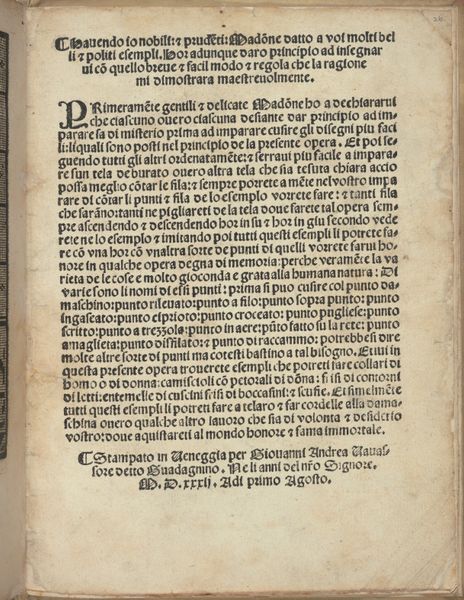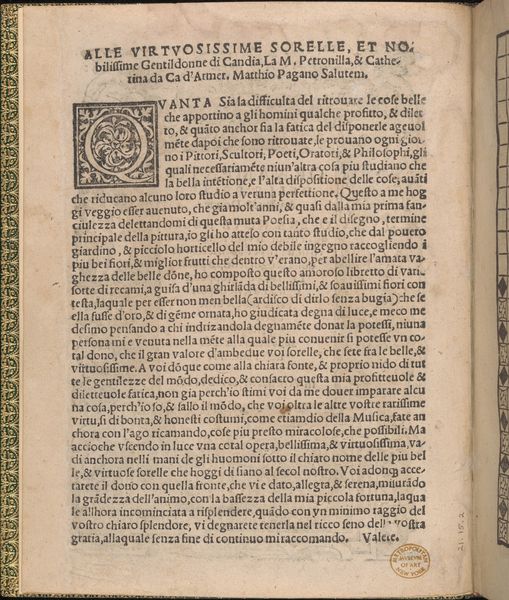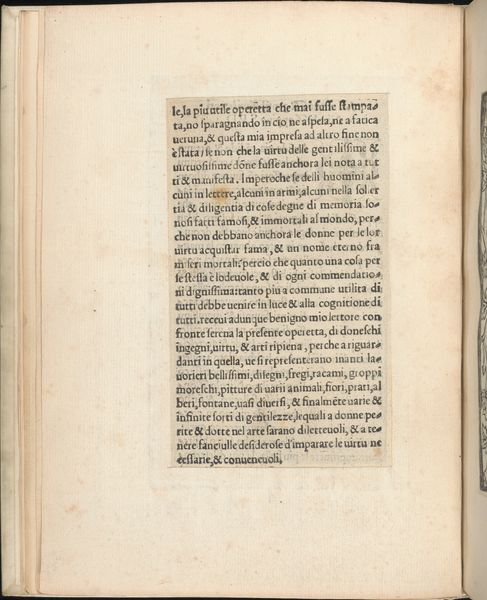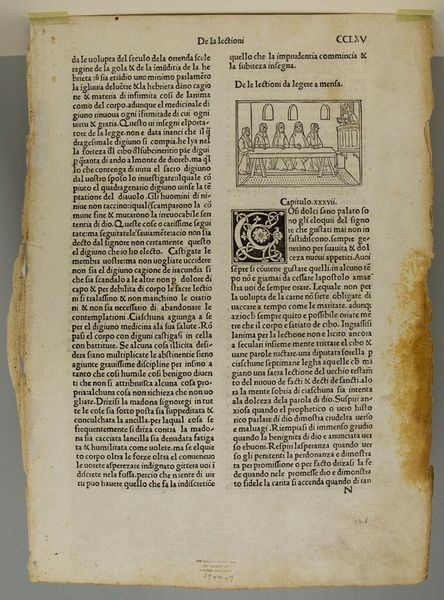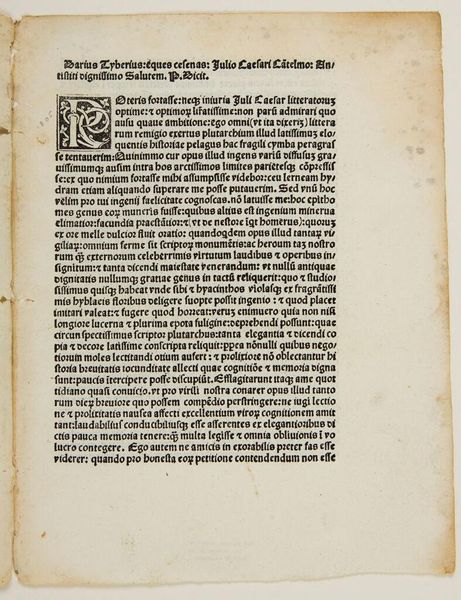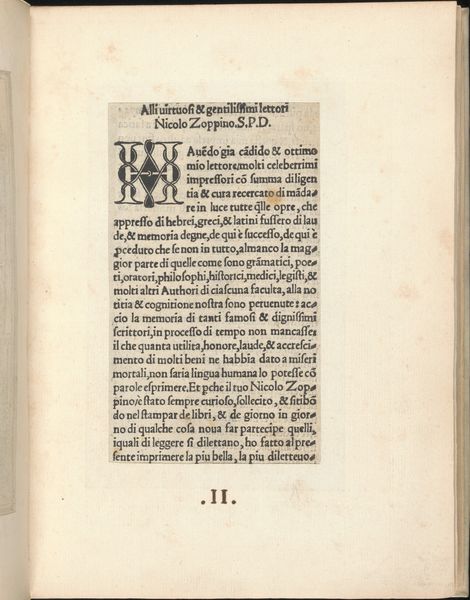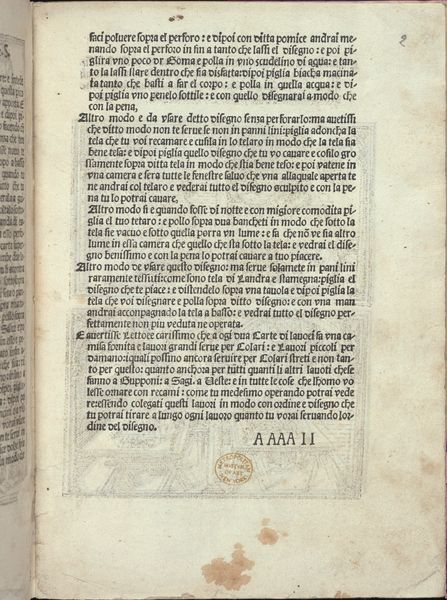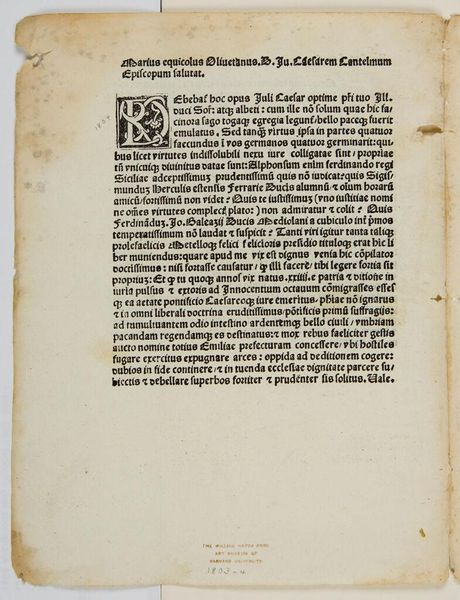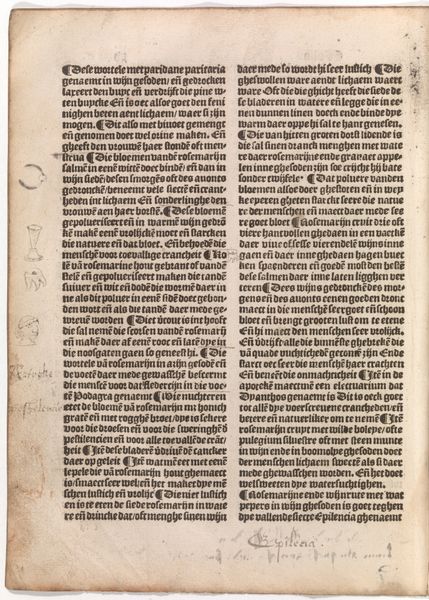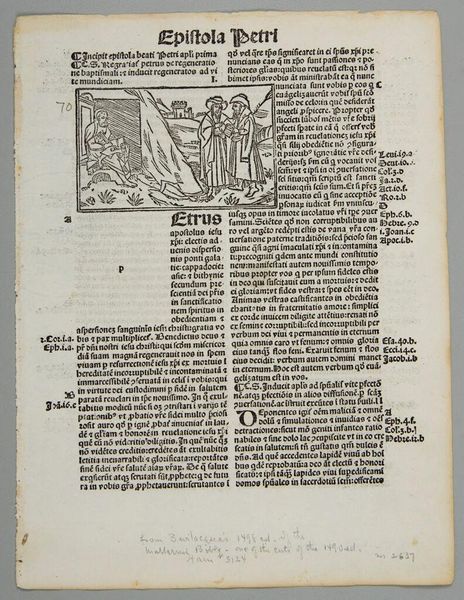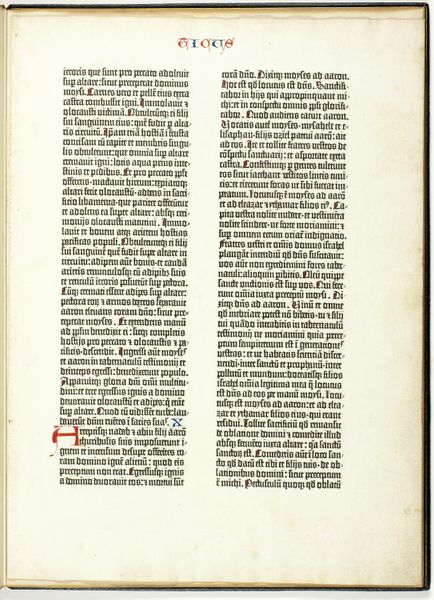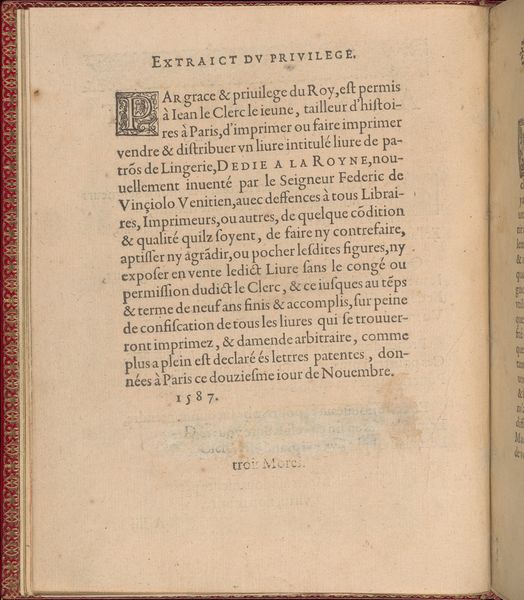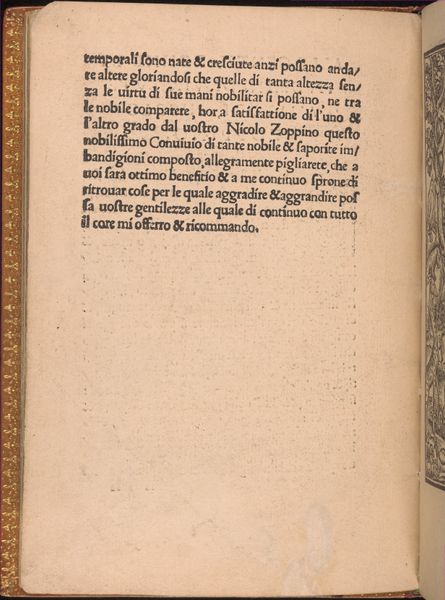
Libro quarto. De rechami per elquale se impara in diuersi modi lordine e il modo de recamare...Opera noua, title page (verso) 1532
0:00
0:00
drawing, print, paper, ink
#
drawing
# print
#
book
#
paper
#
11_renaissance
#
ink
Dimensions: Overall: 8 3/8 x 5 7/8 x 3/16 in. (21.2 x 14.9 x 0.5 cm)
Copyright: Public Domain
This is the title page to Alessandro Paganino’s needlework pattern book, printed in Venice, Italy, probably sometime in the 1540s. In it, Paganino addresses the reader, explaining that the book will clarify the craft of embroidery. He then goes on to outline the methods that one should use. Printed pattern books like this one emerged in the 16th century in response to a growing demand for luxury goods among the rising merchant classes. In a society rigidly stratified by social rank, the ability to emulate the lifestyles of the aristocracy through commodities became an important marker of status. Historians have used surviving examples of needlework, inventories of wealthy households, and printed sources like this one to understand the material culture and social customs of the period. The study of these artifacts sheds light on the complex interplay between art, commerce, and social identity in Renaissance Italy.
Comments
No comments
Be the first to comment and join the conversation on the ultimate creative platform.
